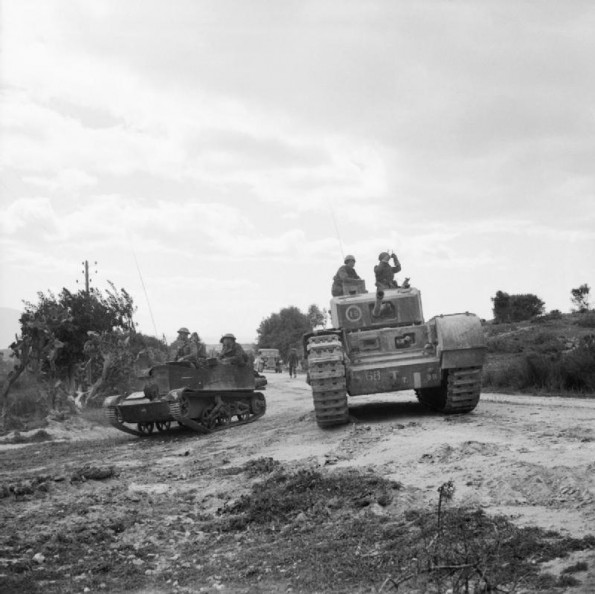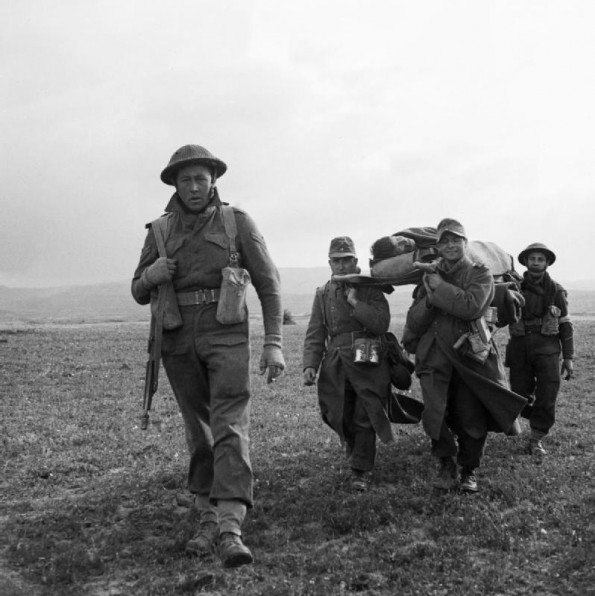Air Operations, Bismarcks
43rd Heavy Bomb Group B-17s and 90th Heavy Bomb Group B-24s attack Ulamoa and the Kavieng airfield on New Ireland.
[Air Operations, CBI
BURMA- 6 7th Heavy Bomb Group B-25s attack the airfield at Heho.
- 9 341st Medium Bomb Group B-25s attack the airfield at Meiktila.
- 1 B-25 and 4 51st Fighter Group P-40s attack a dump at Ningam.
- 10 P-40s from the 23rd Fighter Groupís 16th Fighter Squadron based at Kweilin strafe the airfield at Fort Bayard.
- 1 51st Fighter Group P-40 downs a Japanese Army reconnaissance plane around noon.
Air Operations, Europe
BOMBER COMMANDEvening Ops:
- 392 aircraft are sent to Duisburg with little success. Included in the total are 156 Lancasters, 97 Wellingtons, 73 Halifaxes, 56 Stirlings and 10 Mosquitoes.
- 7 Wellingtons, 6 Lancasters, 3 Halifaxes and 3 Stirlings are lost.
- 27 aircraft lay mines off the Biscay coast.
- 1 Wellington is lost.
Air Operations, New Guinea
43rd Heavy Bomb Group B-17s and 90th Heavy Bomb Group B-24s attack Finschhafen.
[Air Operations, Tunisia
- NATAF and WDAF fighters attack retreating German Army units.
- IX Bomber Command and IX Fighter Command aircraft mount an all-out effort to harass the retreating Axis forces.
- 1 Bf-109 is downed by a 52nd Fighter Group Spitfire pilot near Kairouan at 1650 hours.
Axis Diplomacy
Hitler and Mussolini meet in Salzburg to discuss the progress of the war. Mussolini initially suggests peace talks.
[Burma
Gen Masakazu Kawabe replaces Gen Shojiro Iida in command of the Japanese forces, now to be organized as the Burma Area Army. With the Allied offensive in the Arakan stalled, and the Chindit incursion into northern Burma reversed, Kawabe takes over the command at a favorable juncture. The Japanese are planning to extend their hold on northern Burma and among the logistic preparations that accompany this is the construction of new rail lines. About 60,000 Allied PoWs are employed on this work - about 15,000 of them die through ill treatment.
[+
|
|
North Africa
TUNISIAAxis forces continue their withdrawal towards the Enfidaville line.
The IX Corps opens its attack on Fondouk before dawn. The US 34th Div and elements of the 46th Div lead off in an effort to clear a gap through which the 6th Armored can pass through for the drive on Kairouan.
On the northern flank, the 128th Brigade of the 46th Div advances through the hills east of Pichon to Djebel Rhorab. South of the gap, the 34th Div with the 135th Infantry on the north and the 133rd on the south, is prevented from reaching its first objective, the lower slopes of Djebel el Haouareb, by an intense ground and air bombardment. Tanks are also committed to support the infantry. The attack is supported by artillery fire, beginning at dawn, but air support is cancelled because of the weather.
In the British 1st Army area, the French XIX Corps, ordered to seize Djebel Ousselat and Eastern Dorsal in order to assist the attack of the British IX Corps, advances to positions north and northeast of Pichon. The V Corps is methodically clearing mountainous region north of the Bédja-Medjez el Bab road.
|
|
Occupied Poland
Exterminations at Chelmno concentration camp cease. The camp was build for the extermination of the Jews from the Warthegau (the provinces of Poznan, almost the whole of Lodz province, and a part of the province of Warsaw). Since December 8, 1941, around 1,000 people a day have been gassed at the camp. Victims were herded into the back of a large lorry and, when one batch had been force into the back, the door was shut and then engine started, poisoning with its exhaust fumes those who were locked inside. Besides the 300,000 Jews from the Warthegau, about 5,000 gypsies and 1,000 Poles and Russian prisoners of war have been murdered at Chelmno, although the latter were usually taken straight to the nearby woods and shot. The camp will be reopened by the Nazis in 1944 for further gassings of victims.
[United States, Home Front
In an attempt to combat inflation Roosevelt forbids certain wage and price increases and orders workers not to change their jobs in some industries unless this is beneficial to the war effort.
[


